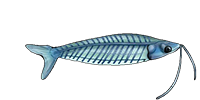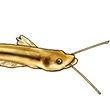Barbie wrote:While nitrate at high levels are an indicator of a problem with your maintenance schedule, ammonia or nitrite at ANY level are a huge problem. A filter so efficient at removing them that it does it instantly is what most people strive for. A wet/dry filter isn't going to "cause" more nitrate than any other filter dealing with the same water volume and feeding levels, IME. You just have the additional benefit of added water volume, as was previously mentioned, and maximum oxygenation and biological filtration, that's also highly customizable. It's hard to go wrong with sump style filtration if you have a tank that's drilled. If the tank isn't drilled and you're using hang on overflows, well, let's just say that's another story, IMO.
Barbie
Barbie, I do drill acrylic tanks, as it doesn't weaken the structure. That is why I use overflows on glass, because it DOES weaken the glass over time if you drill it, and I'd hate to have to replace a large aquarium due to fracture, wouldn't you?
Also, it has been scientifically proven that Nitrasomas and Nitrobacter reduce ammonia and nitrite to nitrate, and no futher. A wet-dry filter is an ideal environment for those bacteria. Thus, wet-drys DO dump nitrate back into your water. I never said they 'cause' anything - its a natural biological process and it has absolutley nothing to do with overfeeding, although overfeeding will accelerate the process. If you had one pampered betta that you fed lightly once a day on an aquarium equipped with a wet-dry, the bacteria would still be very efficiently breaking down the nitrogen cycle to nitrate and putting it into back into your bulk water.
Nitrate's one reason why we all change water regularly, right?
In saltwater, I equip the sump with a plenum to create an anoxic zone so nitrospyra can proliferate and take what's left of the nitrate after the macro algae is through with it and reduce it down to elemental nitrogen. Some freshwater folks use plenums on aquariums with delicate fish, like discus. I don't, because my aquaria are very heavily planted, and the roots can introduce oxegenated water into the low O2 anoxic zone, defeating its purpose.
I agree higher plants do a great job eating nitrate and phosphate. My aim is to keep nitrate as low as possible in ALL my tanks BETWEEN water changes.
For your edification, I change water in aquariums of 220 gallons and under every five days. Over that is every ten. My largest aquarium is a reef tank contaning 720 gallons with a 300 gallon sump.
I keep a light bioload in all my tanks. The 8x3x3 that lives in my living room I mentioned currently has 64 Hyphessobrycon heterorhabdus, a dozen Phenacogrammus interruptus and six each Botia striata and B. morleti. There are a couple three-inch Pekoltia that I see once in a while that have been in here at least three years. If I would add anything, it'd be a group of Hypotopoma gulare.
More than half of the fishes' diet is live. I culture Daphnia pulex and magna in 400-gallon fiberglass vats in my basement fishroom year 'round, wingless fruit flies in five gallon carboys, white worms, Grindle worms, small red worms, and California Black worms, which creep my girlfriend out. I can do a culture of micro worms, rotifers and artemia when needed. I feed thrice daily in small amounts with live, quality prepared and frozen foods. I put in spirolina disks or small vegatable slices in three or four times a week for the mysterious Peckoltias.
Dave




